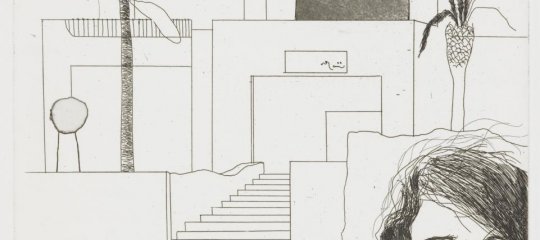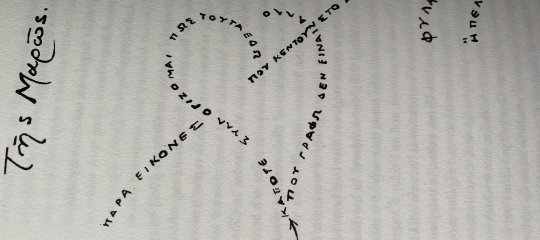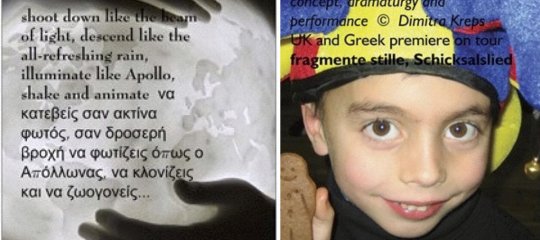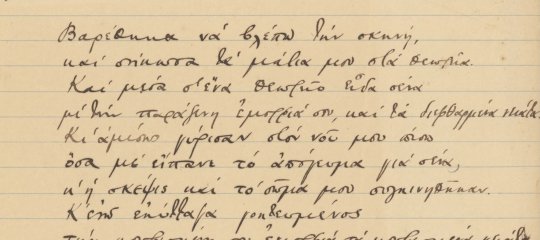Νέα Ελληνικά στο Πανεπιστήμιο του Άμστερνταμ
Συναδέλφισσες και συνάδελφοι γεια χαρά,
Επιτέλους λίγα νέα από το Amsterdam. Στο Πανεπιστήμιο του Amsterdam κάνω μαθήματα στα τρία πρώτα έτη σπουδών.
Σόνια Σταμπουλίδου
16 Ιουνίου 2005
Στο πρώτο έτος σπουδών χρησιμοποιούμε τα βιβλία των Αρβανιτάκη «Επικοινωνήστε ελληνικά» που σίγουρα τα έχετε υπόψη σας. Κάνουμε και τα τρία βιβλία σε ένα έτος, γιατί τα μαθήματα γλώσσας στα δύο πρώτα έτη είναι εντατικά. Με το τρίτο έτος σπουδών έχω την διόρθωση των εργασιών τους (αυτών που γίνονται στα ελληνικά). Νομίζω ότι πιο ενδιαφέρον είναι να σας εξηγήσω τι γίνεται με το δεύτερο έτος σπουδών, όπου ετοιμάζω διδακτικό υλικό.
Τα μαθήματά μου στο δεύτερο έτος σπουδών επικεντρώνονται στον προφορικό λόγο και είναι δύο ώρες βίντεο (κατανόηση προφορικού λόγου) και δύο ώρες συζήτηση (παραγωγή προφορικού λόγου).
Με το σκεπτικό ότι πρέπει να υπάρχει διαβάθμιση στη δυσκολία έχω οργανώσει τα βίντεο έτσι ώστε στα πρώτα να υπάρχει ένας ομιλητής που παρουσιάζει ένα θέμα και να μιλάει αργά και καθαρά. Αρχίζω με κάποια βίντεο από την Βουλή των Εφήβων όπου οι έλληνες μαθητές παρουσιάζουν πολύ ενδιαφέροντα θέματα (ρατσισμός, εκπαίδευση, κλπ). Τα βίντεο αυτά είναι πάρα πολύ καλά, γιατί μέσα σε 5-8 λεπτά ολοκληρώνεται ένα θέμα (και εξαιτίας της μικρής διάρκειας μπορείς να γυρίσεις την κασέτα μπρος-πίσω πολλές φορές) και προσφέρουν πολύ ενδιαφέροντα θέματα για συζήτηση.
Συνεχίζω με κάποια ταξιδιωτικά ντοκιμαντέρ. Χρησιμοποιώ αποσπάσματα, από την εκπομπή «Ταξιδεύοντας» με την Μάγια Τσόκλη, όπου επίσης μιλάει ένα πρόσωπο αργά και καθαρά, ο λόγος είναι απλός και τα θέματα ενδιαφέροντα. Στη συνέχεια έχω αποσπάσματα από την εκπομπή «Εποχές και Συγγραφείς» όπου ναι μεν μιλάει ένας παρουσιαστής καθαρά, αλλά ο λόγος γίνεται πιο δύσκολος (φέτος είδαμε Καρυωτάκη, Ρίτσο, Ελύτη, Εμπειρίκο). Στα επόμενο βίντεο οι ομιλητές είναι περισσότεροι και γίνεται διάλογος. Αυτός ο κύκλος αρχίζει με εκπομπές συζητήσεων (όχι παράθυρα) πχ συζήτηση για την θανατική ποινή, συζήτηση για την ελληνική γλώσσα με τους Μπαμπινιώτη, Σαμαράκη, Φίλια. Προχωράμε σε πιο φυσικές καταστάσεις όπως σήριαλ (πολύ τους άρεσαν οι θανάσιμες πεθερές), ρεπορτάζ και τελειώνουμε με ειδήσεις που θεωρούνται από τους φοιτητές το πιο δύσκολο (συμφωνώ μαζί τους).
Με το ίδιο σκεπτικό έχω οργανώσει τα μαθήματα συζήτησης. Ξεκινώ με τα εύκολα: διαλόγους δευτέρου και τρίτου επιπέδου και προχωράμε σιγά σιγά σε συζητήσεις πάνω σε θέματα που συνήθως τα συνδυάζουμε με τα βίντεο πχ ρατσισμός, παρουσίαση στην τάξη μιας χώρας στην οποία έχουν ταξιδεύσει οι φοιτητές μου, παρουσίαση ενός ποιήματος από τους ποιητές που έχουμε δει στα βίντεο. Κάθε φοιτητής πρέπει να παρουσιάζει στην τάξη κάτι από κάθε θεματικό κύκλο.
Αργότερα φέρνουν οι ίδιοι θέματα από την επικαιρότητα πχ η δολοφονία του Theo van Ghogh, το ευρωσύνταγμα (το οποίο οργανώθηκε με τη μορφή debate) και ορίζεται από πριν ένας που συντονίζει τη συζήτηση έτσι ώστε εγώ να μιλάω όλο και πιο λίγο.
Είναι σημαντικό οι κασέτες να ανανεώνονται (οι ειδήσεις και τα ρεπορτάζ κάθε χρόνο) γιατί φθείρονται από το γύρισμα μπρος-πίσω, αλλά και επειδή τα θέματα πρέπει να είναι κοντά στην τρέχουσα πραγματικότητα.
Λυπάμαι αλήθεια που δεν θα είμαι στο σεμινάριο, ελπίζω σύντομα να δοθεί μια άλλη ευκαιρία. Να είστε όλοι καλά – καλό καλοκαίρι
- Εισέλθετε στο σύστημα για να υποβάλετε σχόλια










